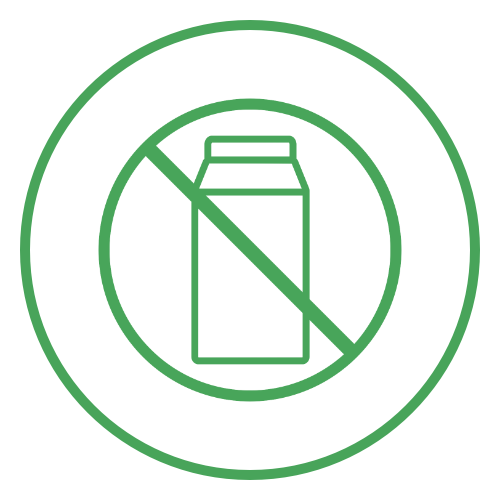Lactose Intolerance
Lactose intolerance is the body’s inability to digest significant amounts of lactose, a predominate sugar of milk. It is also caused by a shortage of the enzyme lactase, which is normally produced by the cells that line the small intestine. Lactase breaks down milk sugar into simpler forms that can be absorbed into the bloodstream; if there is not enough lactase to digest lactose, the results can be distressing — but not extremely dangerous or life-threatening.
Many people deal with digestion issues because of lactose intolerance. They typically discover this insensitivity from eating different dairy products and recognizing which items cause them discomfort. For some people, ice cream, milk, or yogurt may cause them issues and they may need lactase liquid or tablets to help digest these foods. The daily calcium needed through lactose can often be supplemented through vitamins or other calcium-rich foods like greens and fish.
Common symptoms of lactose intolerance are nausea, cramps, bloating, gas, and diarrhea. Thsese issues typically occur between 30 minutes to two hours after eating/drinking foods that contain lactose. The severity of these symptoms varies from person to person and depends on how much lactose an individual can tolerate.
What Diagnostic Tests Are Used To Detect Lactose Intolerance?
The lactose intolerance test, the hydrogen breath test, and the stool acidity test are the most common examinations used to determine if a person is indeed intolerant to lactose. Before taking a lactose tolerance test, patients are required to fast and blood is drawn to measure the blood glucose level. Patients then drink a large amount of a liquid that contains 50 grams of lactose. Blood samples are taken periodically to determine at what rate the fasting blood glucose level rises. A hydrogen breath test measures how much hydrogen is present in the breath from undigested lactose and bacteria in the colon. A stool acidity test measures the amount of acid present in stool; undigested lactose that gets fermented by colon bacteria creates lactic acid and other short-chain fatty acids that can be detected during bowel movements.
What Treatments Are Available To Control Symptoms?
Lactose intolerance is relatively easy to treat. There is no way to increase the amount of lactase enzyme that the body can make, however there are ways to control symptoms through dieting. To determine how much lactose you can have, observe what happens when you eat or drink certain amounts of it. Some people suffer from a small glass of milk at night while others are fine if they eat a bowl of ice cream or aged cheeses. Dietary control of the problem depends on personal observation, and trial and error.
If your body reacts to even small amounts of lactose, then try over-the-counter lactose additives or lactose-reduced milks. Also be aware of these hidden lactose foods (or certain prepared items):
- Bread and other baked goods
- Processed breakfast cereals
- Instant potatoes, soups, and breakfast drinks
- Margarine
- Lunch meats (other than kosher)
- Salad dressings
- Candies and other snacks
- Mixes for pancakes, biscuits, cookies

